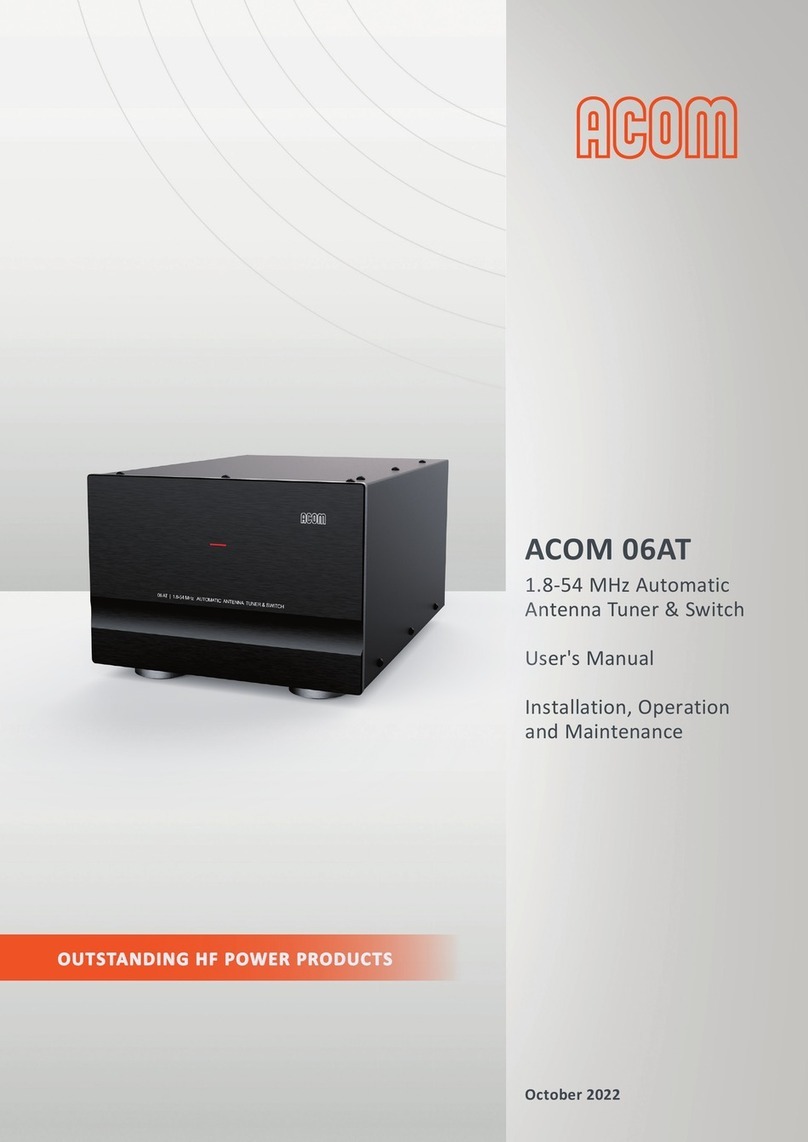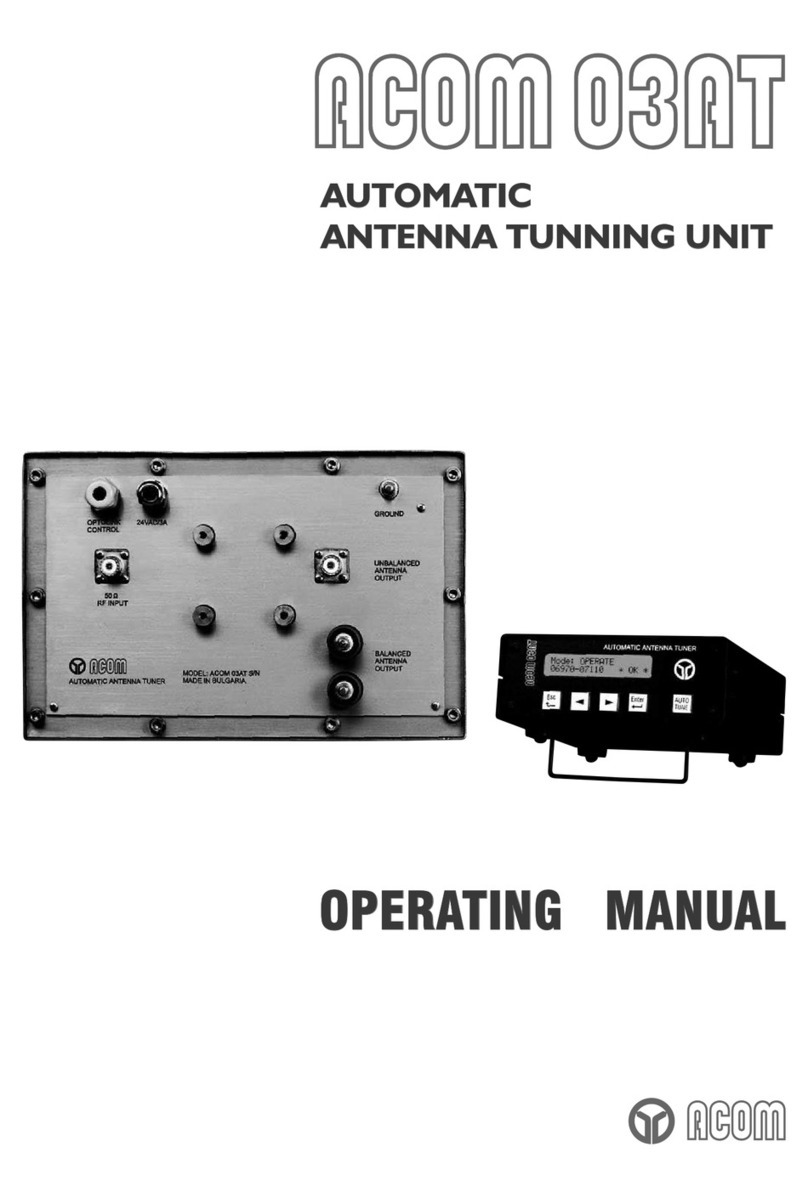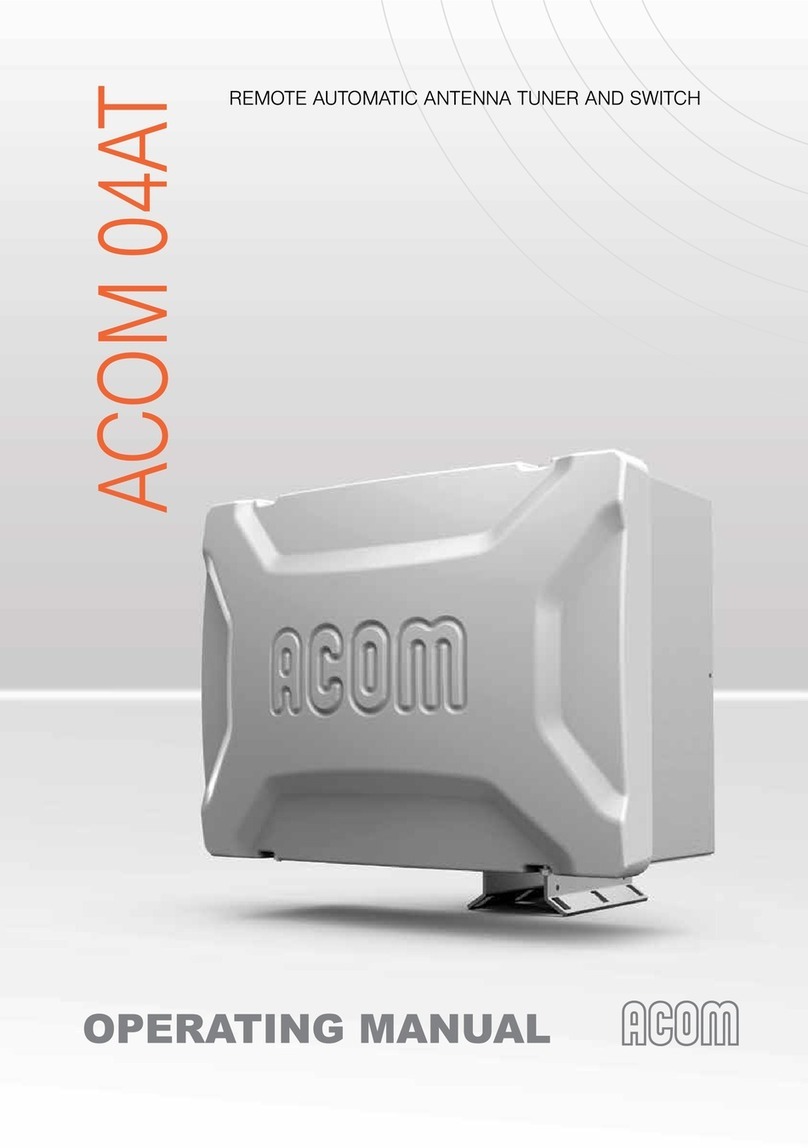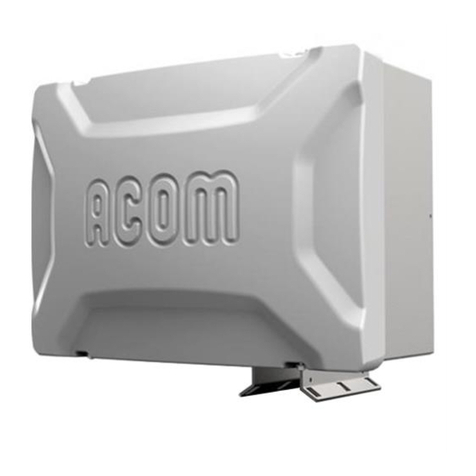3. GETTING STARTED................................................................................................................................... 43
3.1. Turning ON and OFF...................................................................................................................... 43
3.2. Indication, controls and menus..................................................................................................... 44
3.2.1. Tuner Information Area on the Amplifier Screen............................................................ 44
3.2.2. SEGMENT UP/DOWN buttons (Second Function - BAND)............................................... 45
3.2.3. TUNE button (Second Function - BYPASS)....................................................................... 45
3.2.4. АNT Button (Change of Antennas) .................................................................................. 46
3.2.5. Tuner Related Menus ...................................................................................................... 46
4. STARTING UP AND MAIN FUNCTIONS..................................................................................................... 47
4.1. What is tuning type / Rate (Selectivity Degree, Sharpness).......................................................... 47
4.1.1. SHARP .............................................................................................................................. 48
4.1.2. REGULAR.......................................................................................................................... 48
4.1.3. WIDE ................................................................................................................................ 48
4.1.4. FIXED................................................................................................................................ 49
4.2. Tuner Assignment and Unassignment .......................................................................................... 49
4.3. Tuning Modes: FULL, QUICK and BYPASS...................................................................................... 49
4.4. Quick Tuning and Non-Volatile Memory....................................................................................... 50
4.5. Operation in BYPASS Mode........................................................................................................... 51
4.6. Changing Frequencies and Antennas............................................................................................ 52
4.7. Specific of Operation in TRANSMISSION Mode ............................................................................ 52
4.8. Power Reduction at Overload ....................................................................................................... 52
5. BASIC FULL TUNING CYCLE ...................................................................................................................... 53
5.1. What a Full Tuning Cycle Does...................................................................................................... 53
5.2. Operator Actions for a Full Tuning Cycle....................................................................................... 54
5.2.1. Full Tuning for Transceivers with CAT ............................................................................. 54
5.2.2. Full Tuning for Transceivers without CAT Capability....................................................... 54
6. ADVANCED FUNCTIONS AND OPTIONS................................................................................................... 56
6.1. ANTENNA ASSIGNMENT Menu ..................................................................................................... 56
6.1.1. Antenna Assignments by Bands ...................................................................................... 56
6.1.2. Setting the Tuning type / Rate (Sharpness, Selectivity), (S, R, W, F) ............................... 56
6.1.3. Editing Antenna Names ................................................................................................... 57
6.2. Maintenance Functions - ATU SERVICE Menu .............................................................................. 57
6.2.1. ATU Individual Data......................................................................................................... 57































